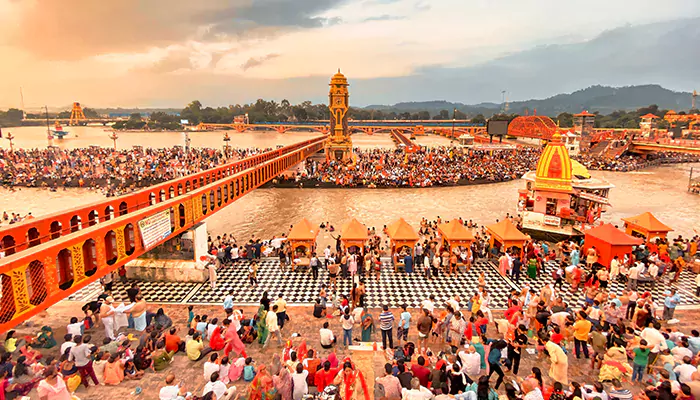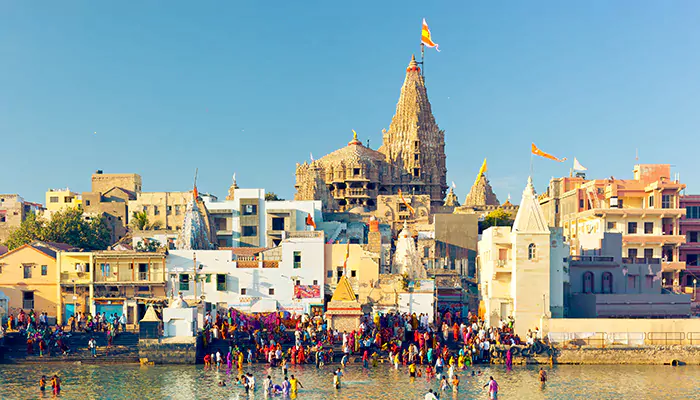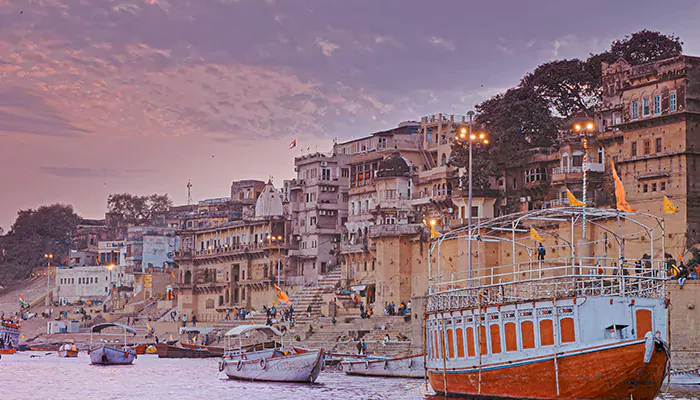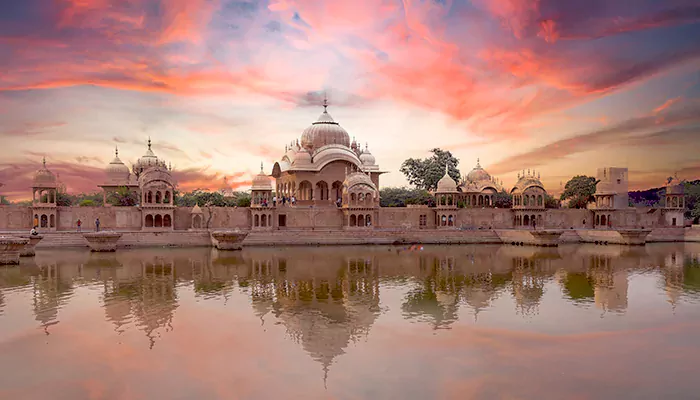
From submerged kingdoms to eternal cremation ghats, these sacred Indian cities exist in the twilight between divine memory and living reality
India is a land where time folds into itself. Here, the ancient lives on not as a relic, but as ritual. Seven cities in particular—Sapta Puri—are believed to carry the echoes of gods, sages, battles, and liberation. Mentioned in sacred Hindu texts, these cities are not merely destinations; they are thresholds to a higher realm. To visit them is to step into a myth still unfolding.
Known as Gangadwar in the Puranas, Haridwar is where the sacred Ganga enters the plains, bringing with her the promise of liberation. According to legend, it was here that drops of Amrita, the elixir of immortality, fell during the celestial churning of Samudra Manthan. Haridwar has long been a magnet for pilgrims seeking absolution from their sins and even the bonds of life itself.
Here, the Ganga Aarti transforms dusk into a moment of transcendence, as flames rise to meet the river. It is not uncommon to see people who come here not just to mourn the dead, but to await their own end, hoping for moksha on the river's banks.

Dwarka, the legendary kingdom of Krishna, now lies submerged beneath the waters of the Arabian Sea. What remains on land is the Dwarkadhish Temple, built over two thousand years ago by Krishna's grandson, Vajranabha. Legends say the original city was swallowed by the sea after Krishna's departure, a myth now partly confirmed by undersea ruins found off the coast.
Pilgrims travel here not only out of devotion but to sense history's pulse beneath the waves.
Known as the "City of a Thousand Temples," Kanchipuram is sacred to both Shaivites and Vaishnavites, but its core is dedicated to Parvati. According to legend, she sculpted a sand Shiva Lingam beneath a mango tree and embraced it during a flood, refusing to let it dissolve. Moved by her devotion, Shiva appeared and took her as his consort.
Even today, lovers and seekers flock to Kanchipuram to pray for unions—both earthly and divine.
This ancient city, once known as Avanti, is home to Mahakaleshwar—the only south-facing Jyotirlinga, symbolising Shiva as Mahakal, the Lord of Time. Here, time is not merely measured but transformed.
Mahakal doesn't just bless; he resets. Devotees come to Ujjain to break free from the constraints of fate, disease, and fear. In the temple's shadow, time is not a chain—it's clay.

Kashi is where Lord Shiva whispers the Taraka Mantra into the ears of the dying. It is where the Ganga flows northward—against her usual path—symbolising a reversal of karma. It is said that to die here is to be liberated, to dissolve into the cosmic cycle.
Its ghats are lined with pilgrims, priests, and pyres—each a testament to the city's sacred choreography of death and deliverance.
Ayodhya is where Lord Vishnu was born as Rama, the seventh avatar, and lived the dharma that still guides millions. Its temples and kunds are woven with references to the Ramayana, and its soil is regarded as sacred enough to absolve even the gravest sins.
The city has witnessed both legend and conflict, but it continues to stand as a place where righteousness is not just theory, but an inheritance.

Mathura is more than Krishna's birthplace — it marks the start of leela, the cosmic dance. From its tumultuous history — plagued by invaders and rebuilt by devotees — it has kept an air of celebration. Unlike Kashi's solemnity, Mathura bursts with colour and music.
Here, god was a mischievous child, and the divine was not feared, but loved.